When Like a Dragon: Infinite Wealth was revealed, I was actually a bit disappointed. I adore the series, but I was hoping the team would build on Ichiban’s story to take the franchise forward rather than bringing back Kazuma Kiryu after he had a great finale in Yakuza 6. If you’re new to the games, we basically had a soft reboot in ways with Yakuza: Like a Dragon (titled Yakuza 7 in Japan) that not only brought in a new protagonist, but also was a turn-based RPG rather than a brawler like prior entries. I love Kiryu’s games and consider Yakuza 0 as one of my favorite games of all time, but Yakuza: Like a Dragon felt like the breath of fresh air the series needed.
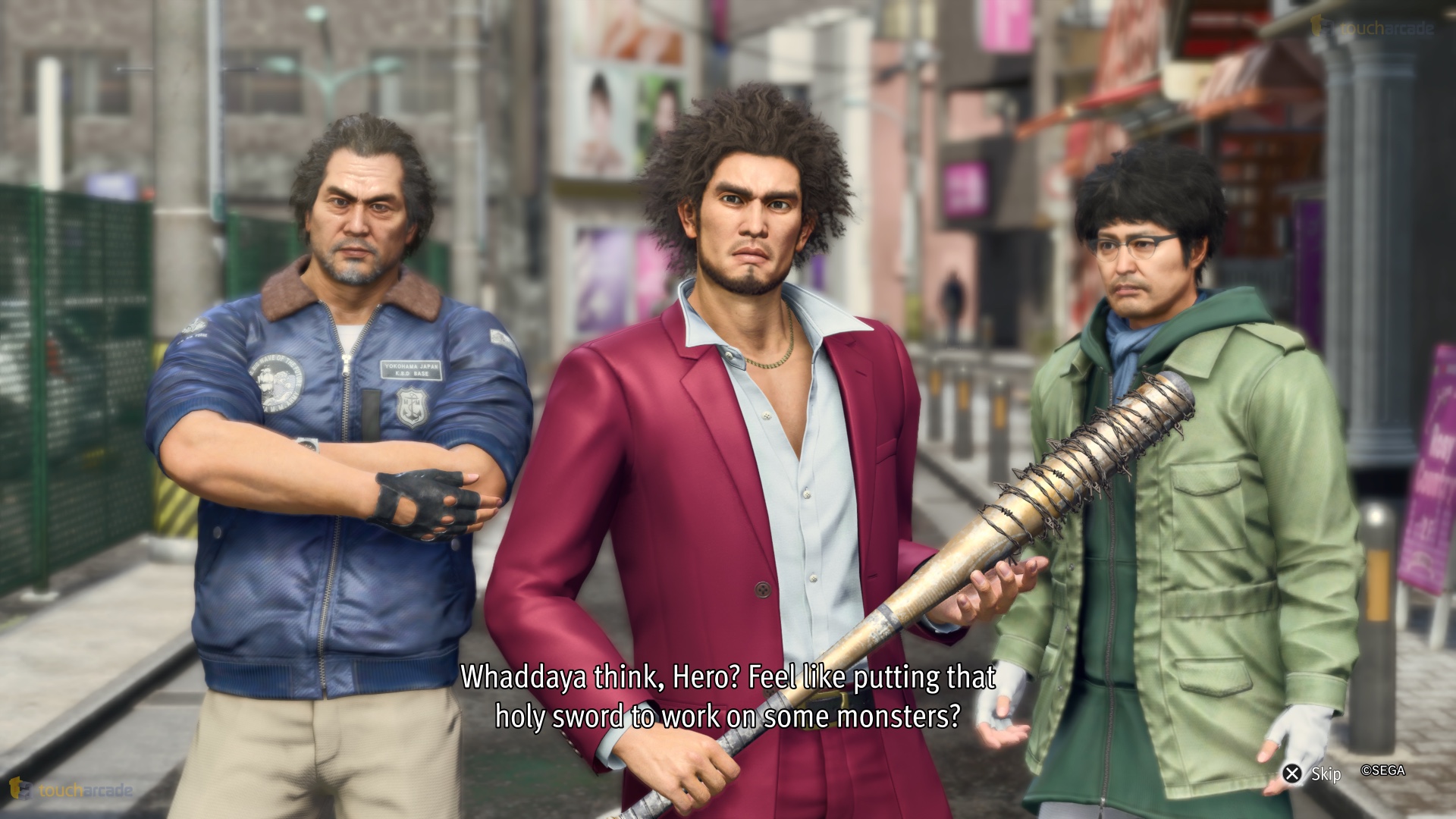
Since then, the team released Like a Dragon Gaiden (link to review), which I ended up loving as well despite its one annoying issue. At that point, I was more or less sold on Kiryu being back, but was cautiously optimistic for where the story in Like a Dragon: Infinite Wealth (titled Like a Dragon 8 in Japan) would go. I’ve been playing it for a few weeks now, and after putting in nearly 105 hours into the game across PS5 and Steam Deck, I consider Like a Dragon: Infinite Wealth to be a masterpiece of an RPG, and one of my favorite games in a very long time. Note that the screenshots in this review are my own from both Steam Deck and PS5.
When I began the main story, it felt like a great opening, but I wasn’t ready for what was coming next. With each chapter I played, mini-game I discovered, side story I found, and more, I genuinely couldn’t believe what Ryu Ga Gotoku Studio and Sega pulled off here. Like a Dragon: Infinite Wealth is one of Sega’s best games ever, but what surprised me is how it also felt like two complete Yakuza games put together and then some. If you played Yakuza 0, you experienced a dual protagonist system there. Like a Dragon: Infinite Wealth is a monstrous experience through its main story and all the optional content. Even after over a hundred hours into the game, I haven’t done remotely everything I wanted to in the game world.

Before getting into what I love about Like a Dragon: Infinite Wealth, I want to go over what I wanted fixed from Yakuza: Like a Dragon. Yakuza: Like a Dragon was the team’s first turn-based RPG, and one that felt like a brilliant first attempt from Ryu Ga Gotoku Studio. It did have some teething issues in its gameplay, and one massive surprise difficulty spike in the later half of the game. The team has addressed all of these issues in Like a Dragon: Infinite Wealth with huge combat improvements and enhancements, and the team even took care of the difficulty spike by actually giving you recommended gear and levels for specific story points throughout the story. Like a Dragon: Infinite Wealth is basically the culmination of not only the newer games in the series, but also as chock full of quality content as Yakuza 0 was, while respecting the series’ legacy as a whole throughout. This is Ryu Ga Gotoku Studio’s magnum opus.
Having avoided watching most story-related trailers, I came into Like a Dragon: Infinite Wealth relatively blind barring what I experienced in the demo included in Like a Dragon Gaiden last year. I was curious about how both protagonists would be handled, and I think the team did a fantastic job. After a strong opening few chapters, you start to see not only different perspectives of the story, but also some superb interactions between the new parties here. I wasn’t worried about how Ichiban’s side would be handled with the new characters introduced, but I was curious about how I’d find characters from Yakuza: Like a Dragon like Seonhee, Nanba, and Saeko in Kiryu’s party. In the last few years, there have been some strong JRPG main casts like Xenoblade 3 having one of the best, but Like a Dragon: Infinite Wealth has surpassed that quite a bit. This might be one of my favorite casts in gaming now.

In addition to the banter during exploration and combat, the characters are further fleshed out not only during the story, but also for their own backstories through the Drink Links system. After you’ve raised your bond level enough through interactions, gifting them something, eating with them, or fighting alongside them, you can experience a Drink Link at the bar. This lets you learn more about a party member and even help them out with their problems. Some of these may even involve actual in-game battles. I ended up completing Drink Links for every character but one in my first playthrough, and they were all worth it.
Without getting into any spoilers or even mentioning what I saw in some of the trailers, Like a Dragon: Infinite Wealth’s narrative and the payoff are consistently fantastic. I’m curious about how not only longtime fans, but also newer players react to some moments from the mid to late game. Out of the new playable and non playable characters, Chitose and Eric are well-written, while the new interactions we see between the likes of Seonhee and Nanba with Kiryu and Kiryu’s interactions with Ichiban give this the feel of two legendary experiences coming together for a grand conclusion.
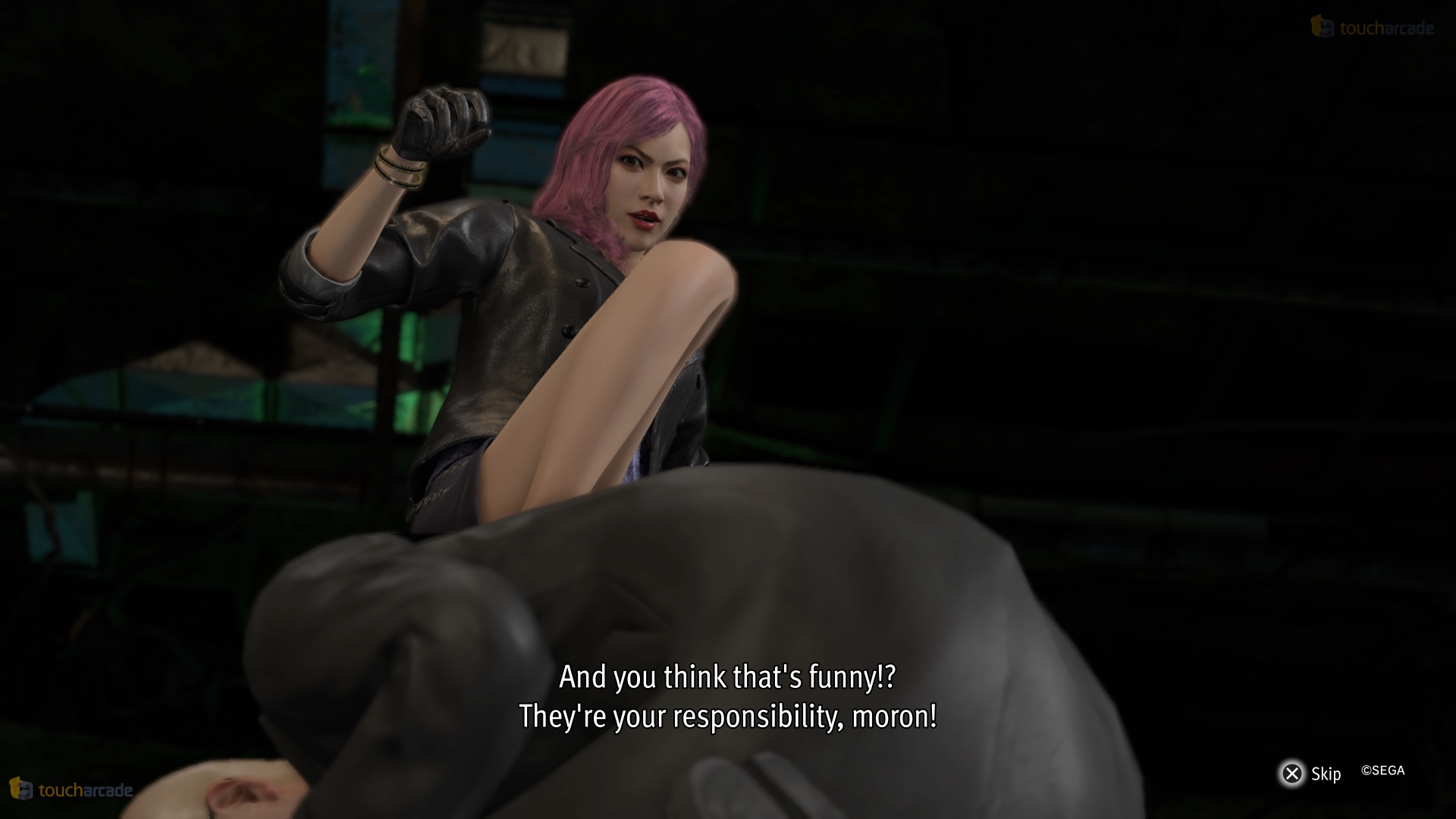
Speaking of the conclusion, there’s a big build up to how I expected things to go in the story, but I realized I was only halfway into the game. It constantly surprised me, and even baited me into thinking how specific characters would act only to do the opposite. All of this is elevated by great cut-scene direction with a mix of in-engine and pre-rendered scenes. There is also quite a bit of voiced dialogue throughout which is a huge deal for a game as long as this one.
I can’t believe I’ve not even mentioned so far that Like a Dragon: Infinite Wealth is set in Hawaii, the first time a game in the series focuses on a locale like this. Hawaii isn’t just some location added for a substory, but a huge, colorful, and dense location full of secrets, specialty coffee shops (a huge win in my book), powerful foes, and a ton of mini-games and NPCs. In fact some of the locations are so dense, I even noticed the frame rate drop in the PS5 version there. After knowing prior locations like the back of my hand, it felt great having a new location in Like a Dragon: Infinite Wealth to discover and also look for secrets and collectibles across the hidden locales.

Outside the main story, there is a wealth (I couldn’t resist) of side content through different kinds of substories, mini-games, and a few that could be fleshed out into their own game. The Dondoko Island mini-game could be its own budget priced standalone release. It has that much effort put into it, and it almost pushes the game engine too much in its scope. Then there’s Sujimon which has its own raids, battles, training, boss fights, and even a very cool thing you unlock after completing it. Barring these two, Sicko Snap and the delivery mini-games were highlights. There are the usual arcade games and more that the Yakuza games include, but I ended up spending too much time on karaoke as usual.
Speaking of substories in Like a Dragon: Infinite Wealth, Kiryu has his own set of substories and memoirs essentially that you can collect. I won’t specifically spoil what these include, but longtime fans of the series and fans of Kiryu over the years will find a lot to love here. Some of the moments here surprised even me (in a good way) with how the developers tackled certain characters. I’ll leave it at that.

A lot of elements in Like a Dragon: Infinite Wealth’s story, gameplay, and optional content had me thinking whether it would end up being a “too much of a good thing" situation, but the team proved me wrong. I only thought maybe one or two hours out of the over hundred hours I put into Like a Dragon: Infinite Wealth were not fun, and that’s because I tried pushing my luck in a dungeon or story moment where I went in without gearing up.
Like a Dragon: Infinite Wealth is structured a bit differently because of the two protagonists. There are some story chapters where you play mostly with only one party, and don’t see much of the other, but most end up letting you do a bit with both Ichiban and Kiryu. The story starts unfolding perfectly the more you play, and everything slowly makes sense with character motivations, and also with Ichiban’s character coming into its own. Kiryu’s character was always going to be amazing, but the real star of Like a Dragon: Infinite Wealth is definitely Ichiban.

When I unlocked the job (combat class) system, or the ability to change jobs in Like a Dragon: Infinite Wealth I was almost spoiled for choice immediately. You start out with a few jobs unlocked, but can unlock more by visiting specific locations or completing certain mini-games. I didn’t spend too much time experimenting during my first playthrough because I was very happy with my party setup for both protagonists, but I’ve been having a blast with the new jobs in the post-game.
One worry I had was how the game would be balanced around multiple jobs with the robust job system, encounters, difficulty, and also equipment. Barring having to remember to equip your best gear when you are playing the other character, I had no real issues with how anything was handled difficulty wise. I even tried pushing things by going into a story scene multiple levels below the recommendation with lower quality gear. It was doable, but definitely a wake up call. I would take those game level recommendations seriously if I were you.
When it comes to the gear or equipment in Like a Dragon: Infinite Wealth, the game features crafting, equipment per job, character-exclusive equipment you can unlock later, and also an upgrade system to enhance your gear. The materials you use to craft or upgrade are found all over the game, but some will be much easier to obtain through mini-games, especially if you’re after the ultimate weapons for each character. Ichiban’s ultimate weapon helped me out a ton during the final area of the game as an example.

At this point, you’re probably wondering if these level recommendation messages are just a warning for difficulty spikes, but that couldn’t be further from the truth. If you keep running from enemies and skip battles, you will be lower level for sure, but the game has a few ways of letting you get up to speed or even grind to be overpowered if you’d like. This is where the dungeons come into the picture. Barring a few story locations that are smaller dungeon-style areas, you have access to two main dungeons in the game. These are optional (outside of a story moment that takes you into the early areas) locations where you can get amazing crafting materials, weapons, and a lot of experience. There are checkpoints that let you save as well, so it isn’t something you need to complete in one go. I usually used to stock up on healing and stamina restoring items before doing a dungeon run as a break from the story or a mini-game.
One new feature in Like a Dragon: Infinite Wealth that makes dungeons much less boring than the sewer in Yakuza: Like a Dragon, is the music player. You can play a few songs from the start, but unlock a plethora of Sega and Atlus songs through exploration and mini-games. I don’t want to spoil the surprise songs they’ve included but I didn’t expect Sega to even remember two of the games featured here. I’d also like to note that some dungeons also feature traps and hazards with the usual hidden collectibles, mimic chests, and special enemies that reward more experience. A lot of the additions and improvements in Like a Dragon: Infinite Wealth make it feel more like a JRPG while still maintaining everything I love about the Yakuza series.
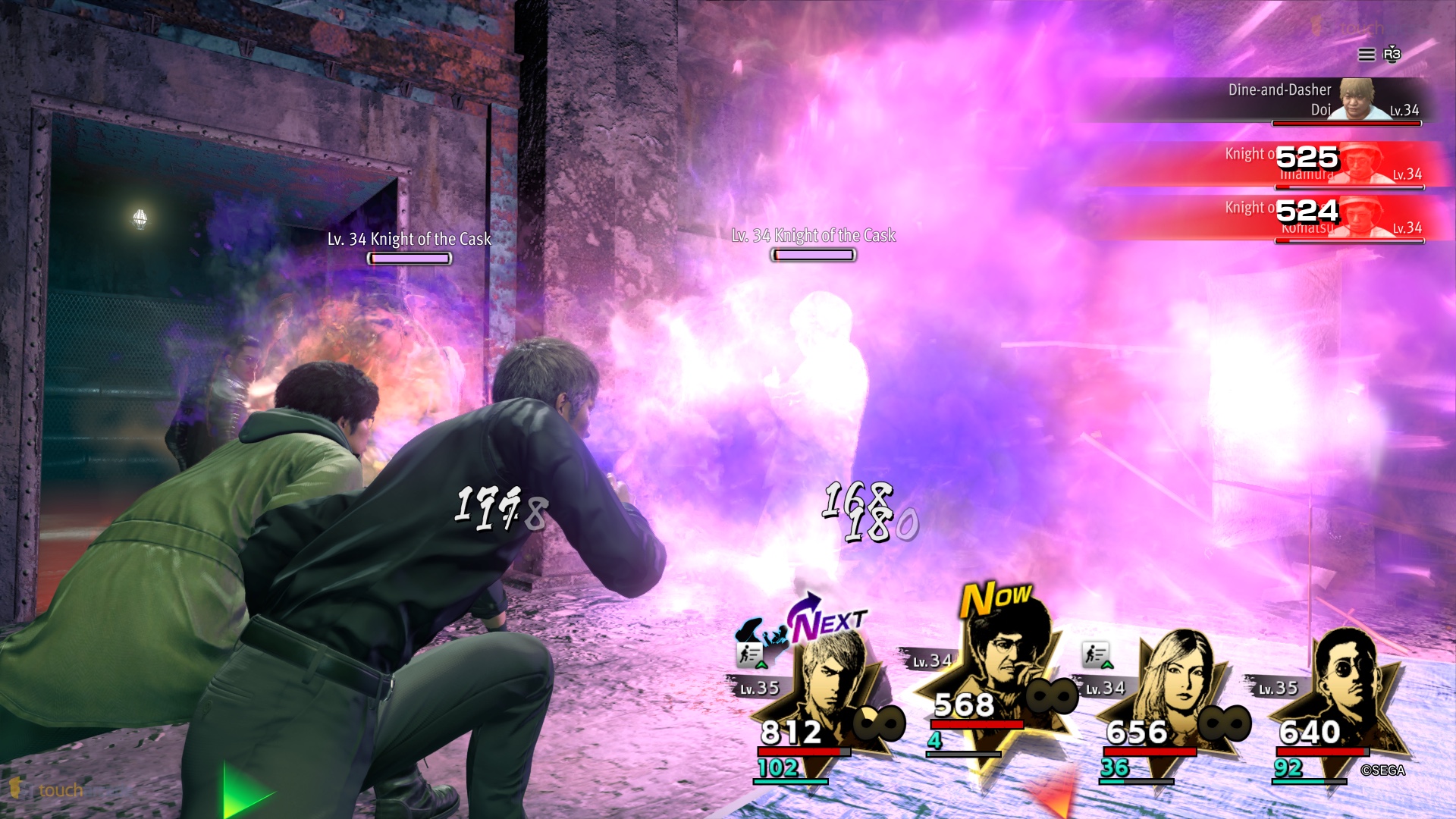
Dungeons, exploration, bosses, and more all revolve around Like a Dragon: Infinite Wealth’s combat system. This time, you can move around in a fixed radius to plan your attacks with the interface highlighting when you’re near an object you can pick up, given a proximity bonus, and even see the direction an enemy will be knocked into letting you strategize on the go. The game is still turn-based, but this level of movement and the interface prompts give you quite a bit of freedom to strategize in your directional attacks, area of effect skills (with their own highlights), and also in environmental interactions. Selecting skills usually has short quick time events like mashing Y/Square or perfectly timing your X/Triangle button press to get a damage increase. Guarding against attacks by timing a press of A/O lets you lessen the impact of attacks.
This movable area for the character you’re controlling now removes the randomness of the prior main entry. You also don’t need to worry about enemies blocking your path while you try and do a basic attack against an enemy further away. My only complaint with the combat system is in how the camera sometimes does not reposition quickly enough on an enemy attacking. This means you don’t get a chance to try and do a perfect guard in time. I’m not sure if this will be fixed for launch, but I hope it is addressed at some point.
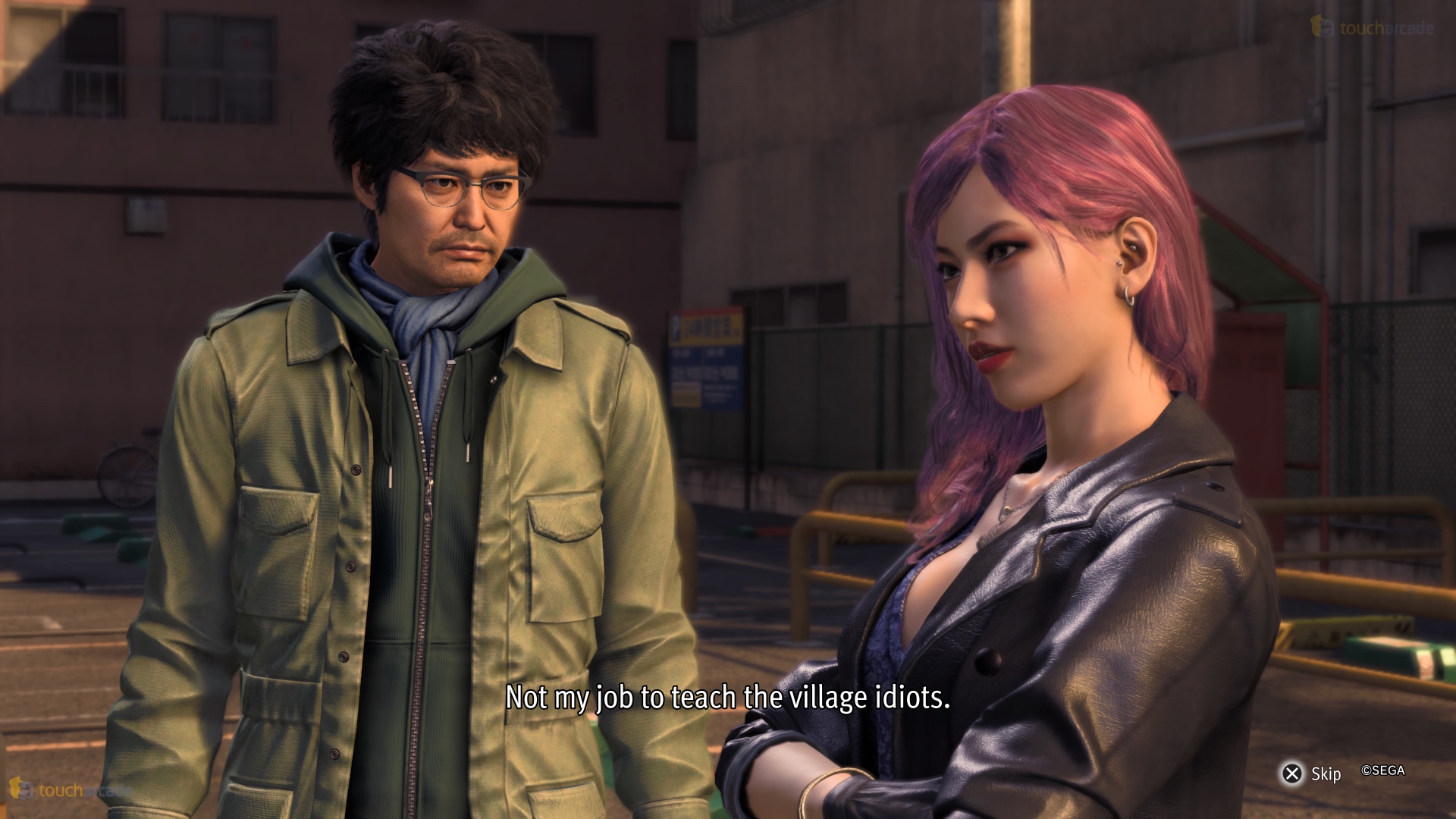
One aspect that really elevates the whole combat experience is the new party members and also the party structure across the game. Having Seonhee playable is amazing, and I’m glad it happened, but finding your own synergies with the job system and parties to eventually get to a point where you wipe out high level enemies in a few turns before they can even act never gets old. I enjoyed Seonhee’s whip attack that uses a powerline to do area of effect damage, and followed that up with another area of effect attack doing fire damage basically melting enemy health bars.
The demo gave the impression that Kiryu can just use brawler style combat as his ultimate ability at any time, but keep in mind that you don’t just get access to it immediately, and you can’t just spam it and play with Kiryu as a brawler. This is a turn-based experience through and through, but Kiryu can get into brawler mode after a specific point in the game, only once his special bar fills up. The way you unlock it is also one of the best surprises in the game.
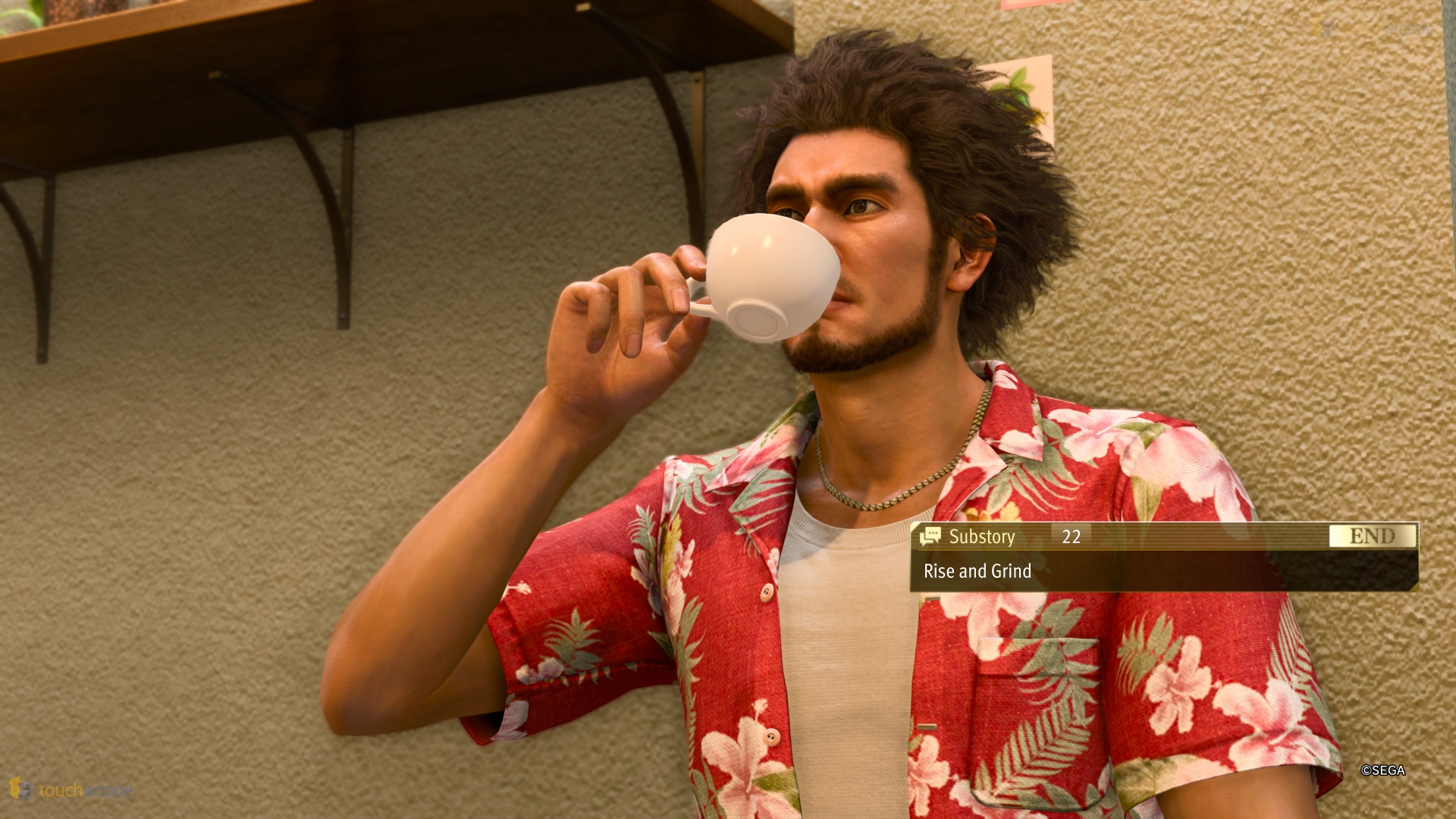
While you can fast travel to taxi points across the map once you’ve unlocked them by walking by, the real joy of the experience is running around and discovering a random powerful item in a briefcase just lying in the curb or picking up a useful item from the bin. You can of course use the new segway-like device to speed around town. I love that you can even customize the color and particle effects for this and it requires its own charges and upgrades. By about the middle of the game, I worried how I’d even keep track of all of this with the many upgrade and crafting systems included, but it all comes together really well. You just need to remember to upgrade your gear and buy healing items often.
Like a Dragon: Infinite Wealth’s combat also features poundmates which are this game’s summons, and they are even more over the top than the prior game. I ended up unlocking so many optional ones through substories and mini-games that I forgot to use many of them by the end, and only remembered this during the final area of the game where I let loose and just enjoyed the spectacle of the poundmate animations for some encounters.
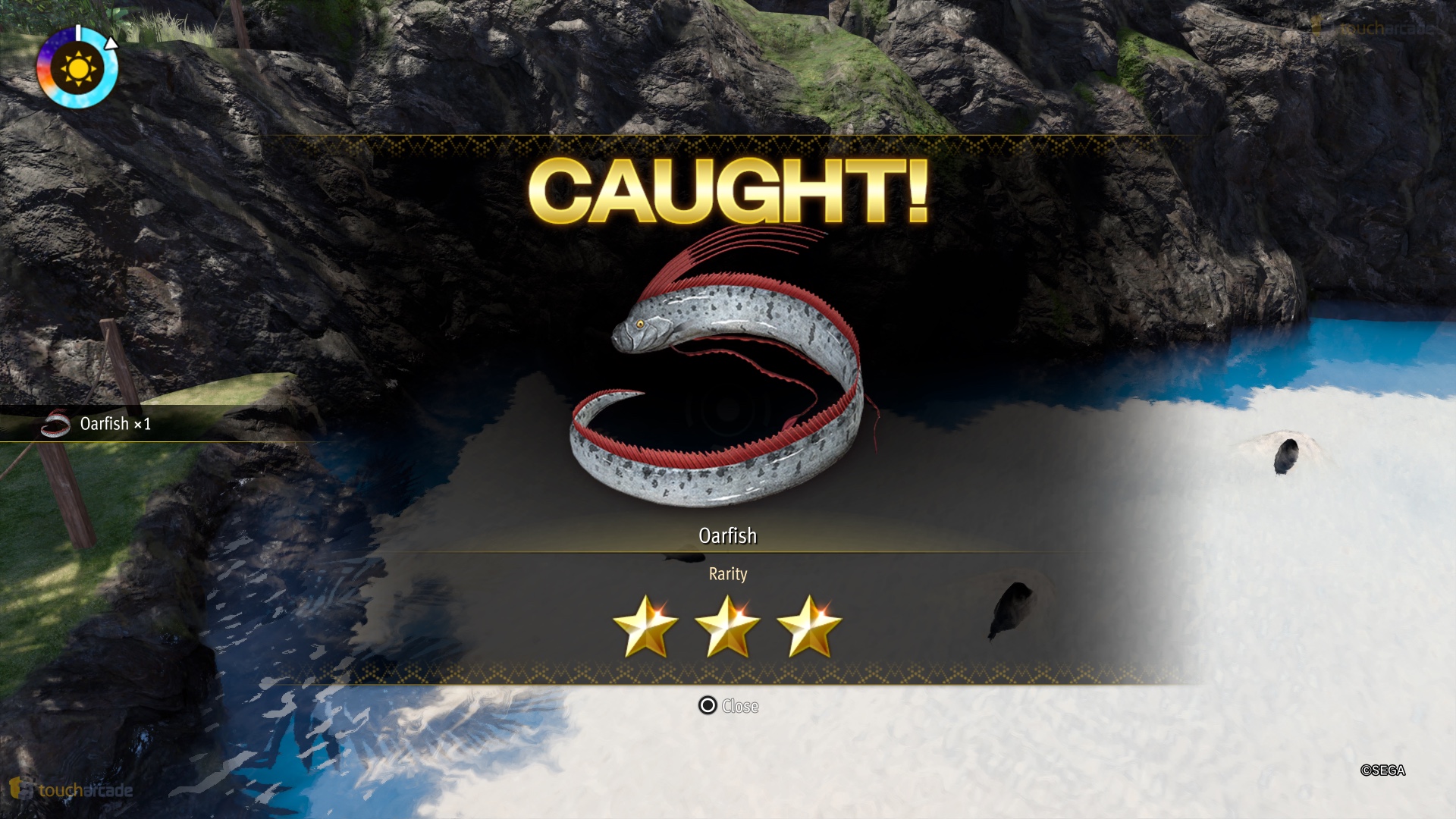
I mentioned Like a Dragon: Infinite Wealth’s Dondoko Island mini-game already being very in-depth, but I was surprised at how much time I was willing to put into it. For mini-games like Sicko Snap, I stopped playing after doing it enough times to unlock the gear I wanted, but here I was just using Dondoko Island like I do karaoke in Yakuza games, as a way to take a break from the main story. It helps that Dondoko Island was great to earn money and something special at the end as well.
If you played Like a Dragon Gaiden, you’d know that Sega added VTuber Kson to the game as a hostess in the mini-game, and I was glad to see that. In Like a Dragon: Infinite Wealth, she’s a bartender, but the VTuber presence doesn’t stop there, and I found it very interesting how the developers and writers handled that aspect in the story. Who knew adding VTubers and more coffee shops would help this much? But jokes aside, I definitely enjoyed that aspect of the game.
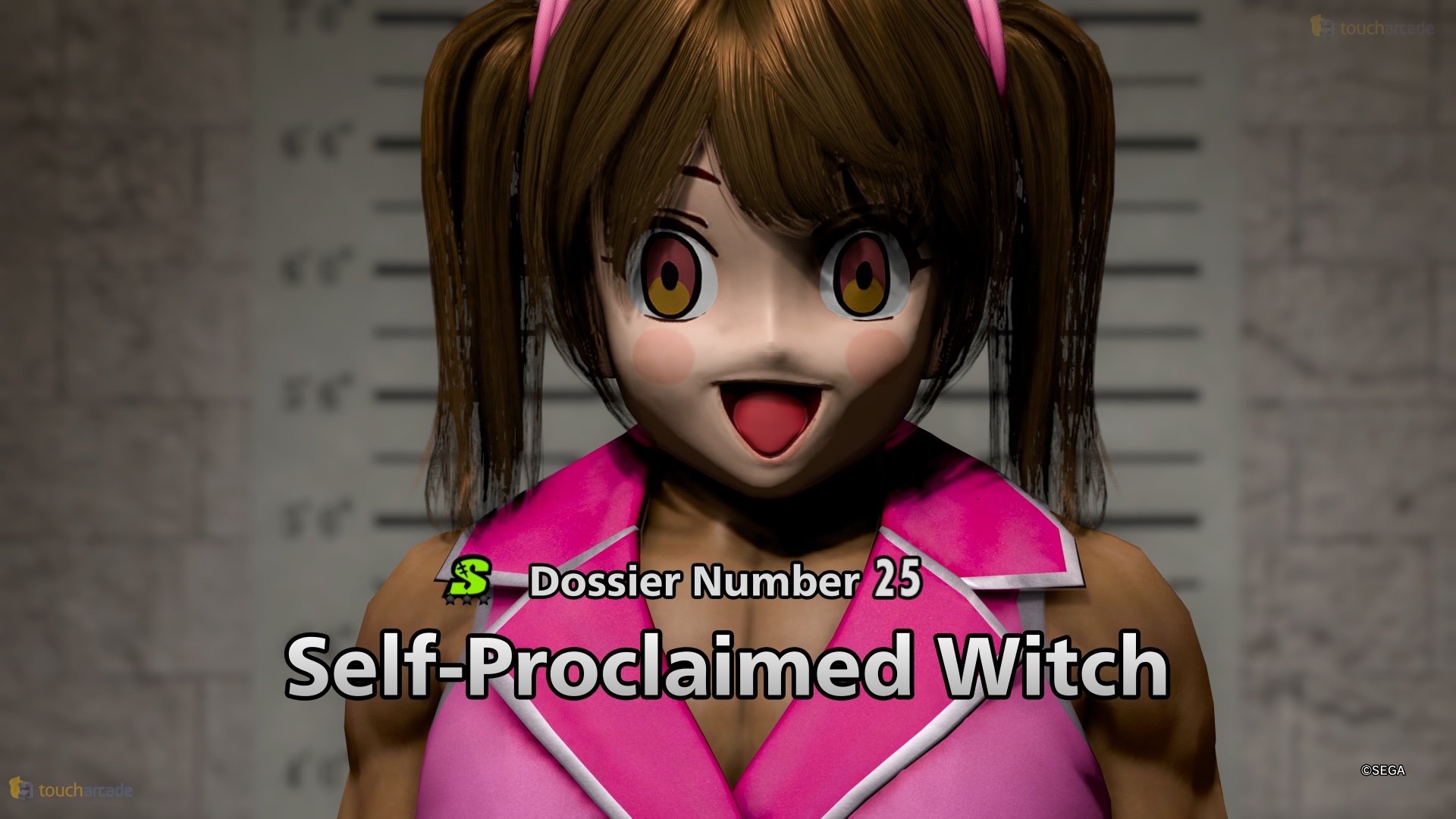
Despite playing the game a lot daily for a while now, I still didn’t end up seeing everything it had to offer, and will be dipping into it slowly aiming for 100% completion over the coming weeks. It really is a monster of a game in just about every way, and I was surprised at how it never felt like it had padding. You even get a wealth of save points and items in the late game locations that throw enemies at you constantly.
Visually, Like a Dragon: Infinite Wealth looks mostly gorgeous. There are some elements that feel a bit unpolished, but it is a nice step above past games in its scope and visuals in Hawaii. The dynamic weather system is also very well done. Character models are fantastic, and the team definitely stepped up with the production for story scenes. Performance will vary in parts depending on what you’re playing on though.
I played Like a Dragon: Infinite Wealth on both PS5 and Steam Deck for this review, but will focus on the Steam Deck portion for the technical details. On PS5, Like a Dragon: Infinite Wealth targets 60fps and I only noticed the frame rate drop considerably in one in-game location with a ton of NPCs and also in two late-game boss fights during attack cut-scene animations or during attack animations only.
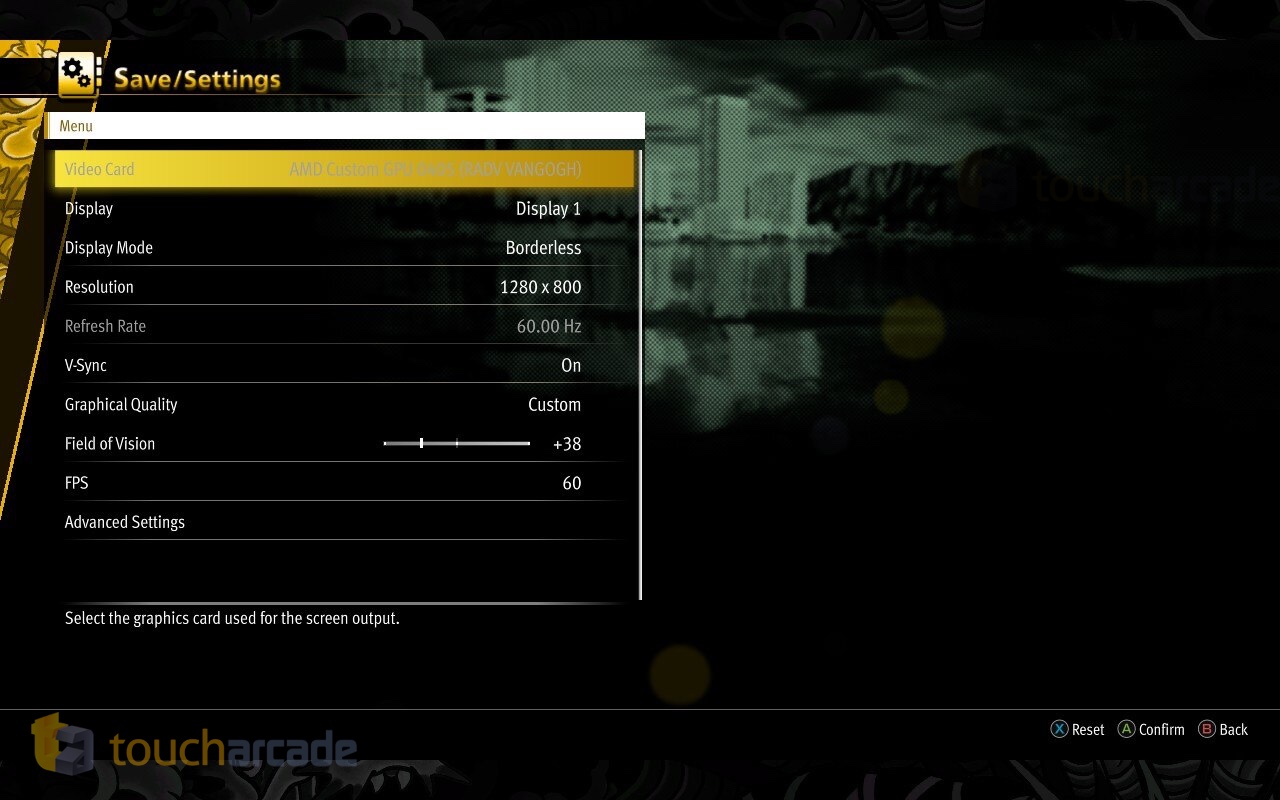
Like a Dragon: Infinite Wealth is Steam Deck Verified already which is always a good sign, but Valve sometimes marks games that don’t run well as Verified. Thankfully, Like a Dragon: Infinite Wealth is actually really good on Steam Deck, and you will likely already know what to expect if you played the demo or played Yakuza: Like a Dragon on the handheld. On Steam Deck, Like a Dragon: Infinite Wealth lets you adjust display mode (borderless, fullscreen, windowed), resolution (with 16:10 and 800p support), refresh rate, toggle v-sync, use graphics presets, adjust FOV, frame rate target (30, 60, 120, unlimited), and adjust advanced settings.
The Like a Dragon: Infinite Wealth advanced graphics settings on Steam Deck let you adjust texture filtering mode, shadow quality (which I set to low as usual), geometry quality (Medium for me), realtime reflections, motion blur, SSAO, render scale, depth of field, reflection quality, and a few upscaling techniques. This includes AMD FSR 1.0, FSR 2, FSR 3, Intel XeSS, and also the game’s default anti-aliasing. I ended up using either FSR 2 or FSR 3 during my time with it on Steam Deck. While I obviously couldn’t test this on Steam Deck, if you were wondering about DLSS, Nvidia announced that it will be supporting it.
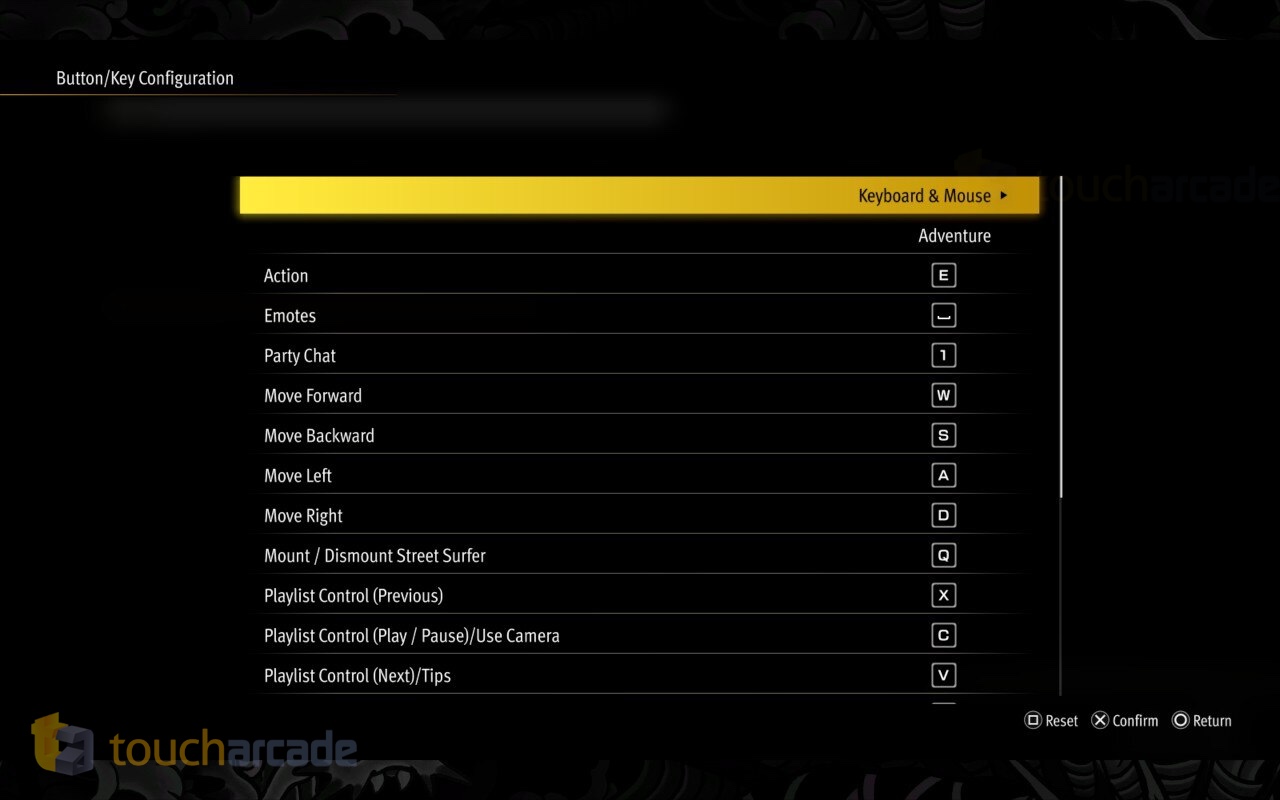
After testing the final game’s most recent build as of this writing, a locked 60fps isn’t really doable on Steam Deck without the game looking a bit too blurry for my liking. I’d recommend aiming for 40hz or 30fps if you’re ok with that with much better visuals. Turning shadows to low, leaving geometry on medium, and using motion blur if you like it, while playing around with render scale and FSR 3 are your best bet for a smooth experience right now. You could get much better performance by lowering the render scale below 100 to say 80, but I’m not a fan of how it looks. I’d rather stick to a 40hz target with some compromises given this is a turn-based game after all, or 30fps with better visuals. Keep in mind that while the opening of the game might seem to run at 60fps for you, Hawaii is more demanding in many parts with how dense the locations are with many NPCs walking around. Also be warned that one more crowded mall area and two boss fights seem to be quite a bit heavier than the rest of the game.
On the audio side, Like a Dragon: Infinite Wealth has amazing music throughout its upbeat battle themes, catchy themes played during mini-games, excellent new and old karaoke songs, and memorable boss themes. Two of the later boss themes are amazing, and I can’t wait to see the reaction to them when my friends play Like a Dragon: Infinite Wealth. Like a Dragon: Infinite Wealth also happens to use a nice arrangement of some older songs from the series, but I won’t say where that happens. I know some previews have shown this, but look forward to some nice surprises in the game’s soundtrack.
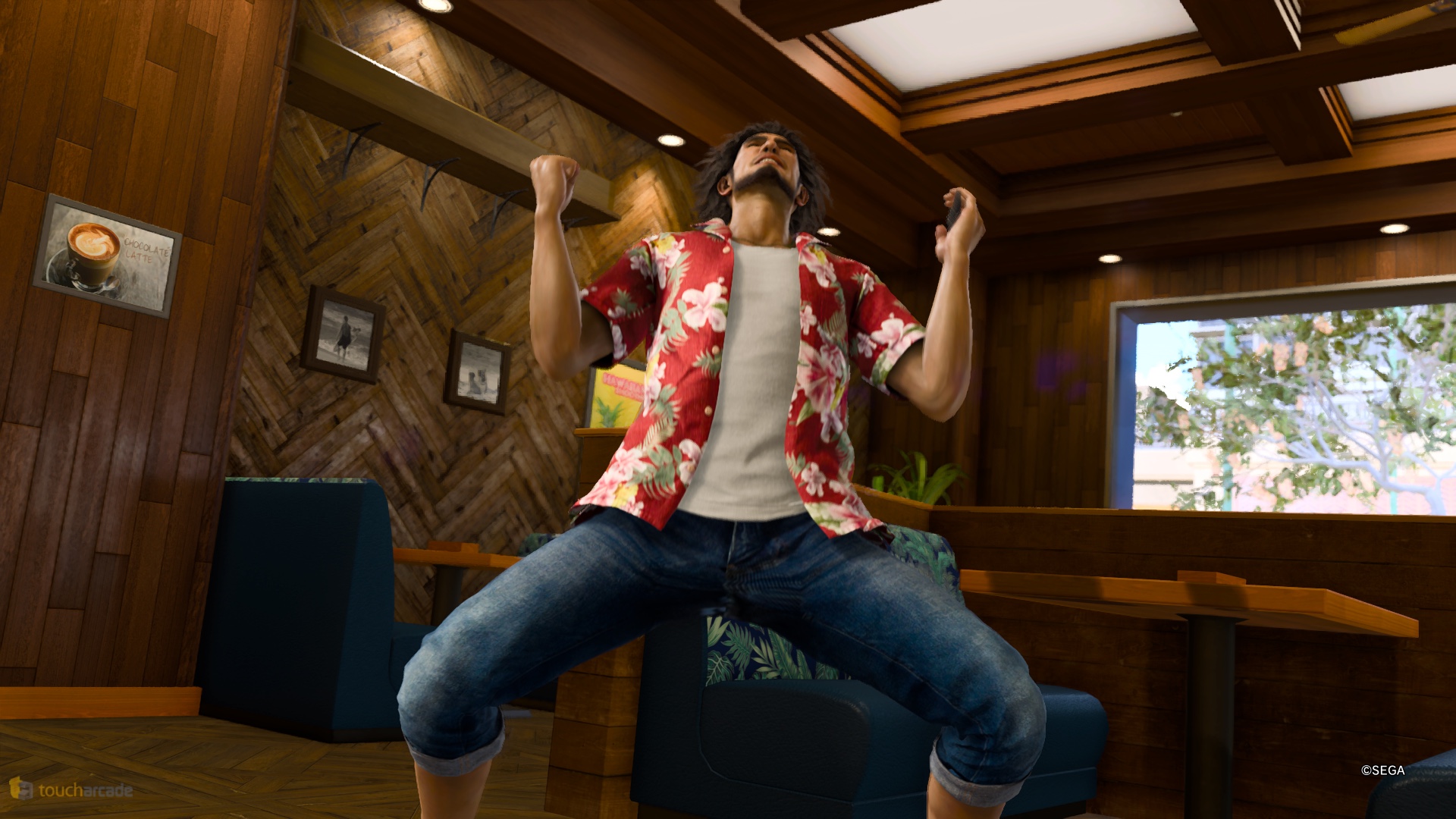
While I expected Like a Dragon: Infinite Wealth to have excellent Japanese voice acting, I want to highlight Kazuhiro Nakaya, the Japanese voice of Ichiban Kasuga for his performance here. It is probably my favorite protagonist performance in any RPG alongside Ben Starr’s Clive in Final Fantasy XVI and Harry McEntire’s Noah in Xenoblade Chronicles 3. Kazuhiro Nakaya delivered something beyond special here. Not to say the other cast members didn’t do a great job, but his delivery really stuck with me throughout even days after I hit certain story beats.
If you, like me, were considering getting Like a Dragon: Infinite Wealth on PS5 or wondering what that version offers over the Steam Deck barring the visual and performance upgrades, the DualSense features are very nice. The developers added proper haptic feedback for many small things like ukulele strum attacks or for the segway while exploring. I expected some basic adaptive trigger support, but I’m very happy with the DualSense implementation here. It is a shame that this seemingly isn’t available on the PC version.

Barring some performance improvements in parts I had issues in, the only thing I’d like to see improved is the camera in some encounters. The game shouldn’t have enemies attack while the camera hasn’t adjusted yet. I also would like Sega to add an option to the PC port to force the display of specific controller button prompts rather than have it auto detect. The Persona ports let you select or force Nintendo and PlayStation prompts regardless of your input method. This is a minor issue, but since the PC port is so good in just about every other way, it would be a nice addition.
Like a Dragon: Infinite Wealth is Ryu Ga Gotoku Studio at its peak. It feels fresh while still bringing together the best aspects of my favorite games from the studio. Not only does it manage to deliver a compelling story with twists and turns throughout the massively long main story run time, but the sheer quality of its optional content and mini-games puts some of the best entries in the series to shame. We finally have a modern Yakuza game that matches not only the quality, but also the quantity of Yakuza 0’s awesomeness. It gets my highest possible recommendation. I can’t wait to see what the studio does for the next game.
Like a Dragon: Infinite Wealth Steam Deck Review Score: 5/5
You can read all our past and future Steam Deck coverage here on our main page for all things Steam Deck. If you have any feedback for this or what else you’d like to see us do around the Steam Deck, let us know in the comments below. Thanks for reading.